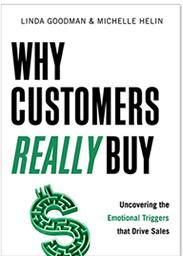Avoid the Right Answers to the Wrong Questions

Bono, the internationally acclaimed venture capitalist, businessman, philanthropist, and musician, once lamented “We thought we had the answers, it was the questions we had wrong!” Regardless of how extensive customer research may be, if the findings used to make decisions are flawed, not only will companies waste valuable resources but they risk being dangerously misled.
How can this be avoided?
#1: Acknowledge the Power of Emotion
It’s a mistake to assume most B2C and B2B decisions are based primarily on logic when over 70% of all decisions are actually based on emotional and intangible criteria. Neither consumers nor business customers are motivated exclusively by facts and figures. What they think and how they act is largely driven by emotion.
#2: Resist Internal Assumptions
It’s easy to fall into the trap of seeking solutions by coming up with questions we think are important based on internal assumptions. But what if the assumptions are wrong? What if all they do is validate or disprove an internal hypothesis? What if they measure rather than inform? Then companies are left with the right answers to the wrong questions. Answers that may be accurate but fail to arm them with what’s needed to drive bottom line results.
#3: Recognize the Pitfalls of Direct Questions
Answers to direct questions frequently fail to convey the emotional triggers that explain behavior. Often the responses are misleading because customers anticipate in advance what they’re likely to be asked giving them time to craft responses that:
- Cast them in a flattering light
- Sidestep sensitive or potentially embarrassing topics
- Dissemble when concerned about jeopardizing relationships
#4: Adopt a Back-Door Approach
These pitfalls can be circumvented by surprising customers with engaging but disarming questions. When asked the unexpected, they have no ready answers and instead are more spontaneous and authentic.
For example, a company in the B2B service sector might want to understand how to ensure they’re responsive to the needs of their customers in order to forge stronger relationships. A back-door conversation starter would be to ask customers to describe the best relationship they ever had with a service provider. Share stories about what made that relationship so positive. Probe to understand how that provider earned their trust. And, alternatively, probe the worst relationship they ever had and why.
Their impromptu narratives will provide a clear roadmap of how to leverage the emotional triggers at the root of their behavior to increase sales and profits.
Conversely, the conventional path would consist of direct questions focusing on rankings, scores, competitive factors and/or alternative services. The answers could all be factually correct and yet fail to provide actionable insights. Especially if those questions were based on internally held assumptions.
The back-door approach paints a picture. The traditional one provides a sketch.
Avoiding the right answers to the wrong questions requires going beyond what your customers say to uncover the emotional triggers that explain what they really mean!





